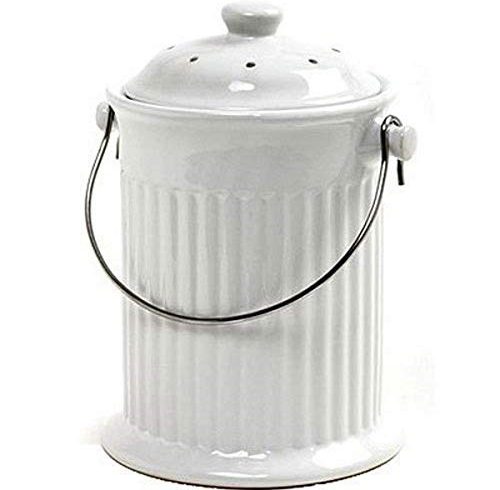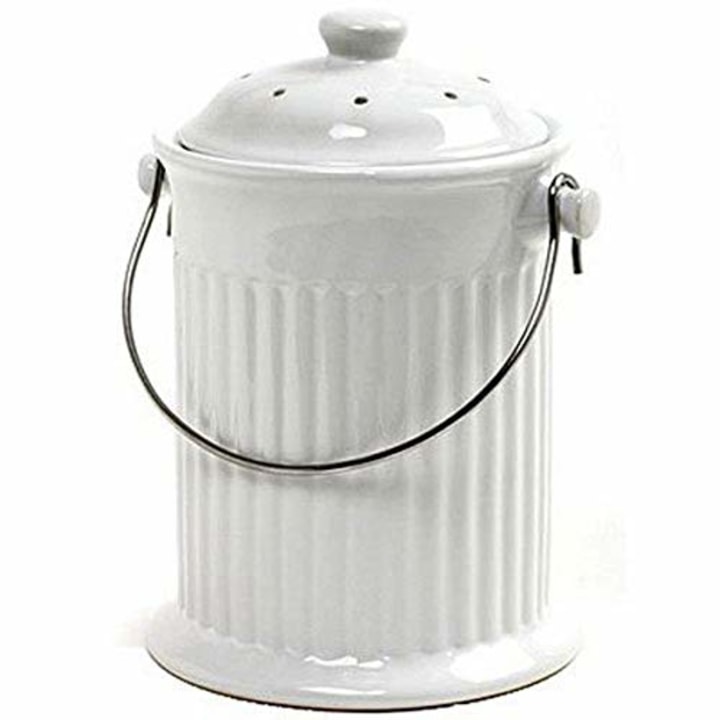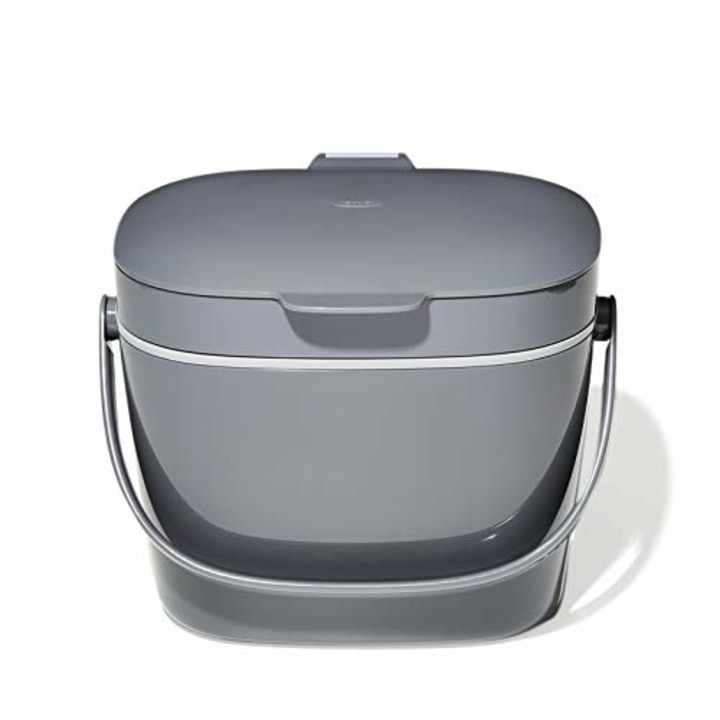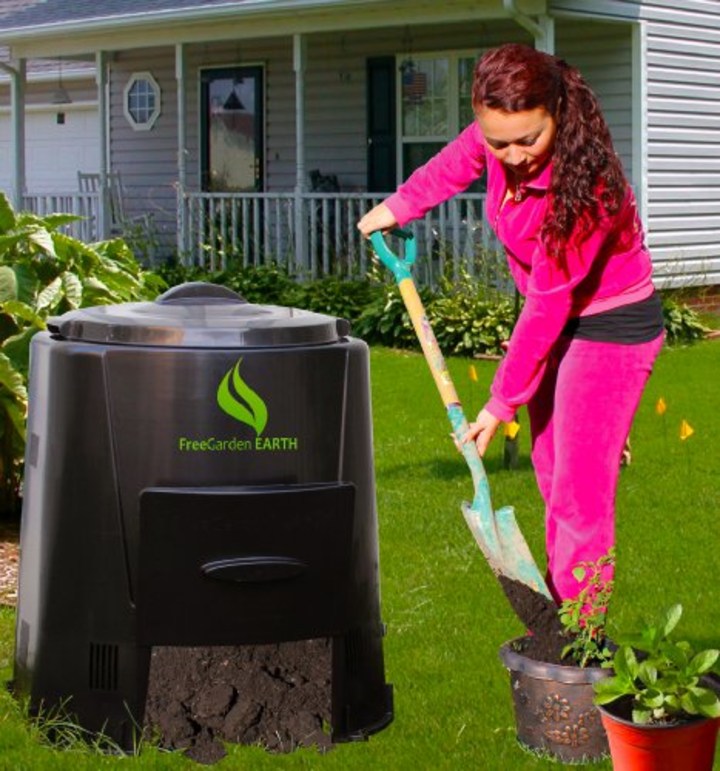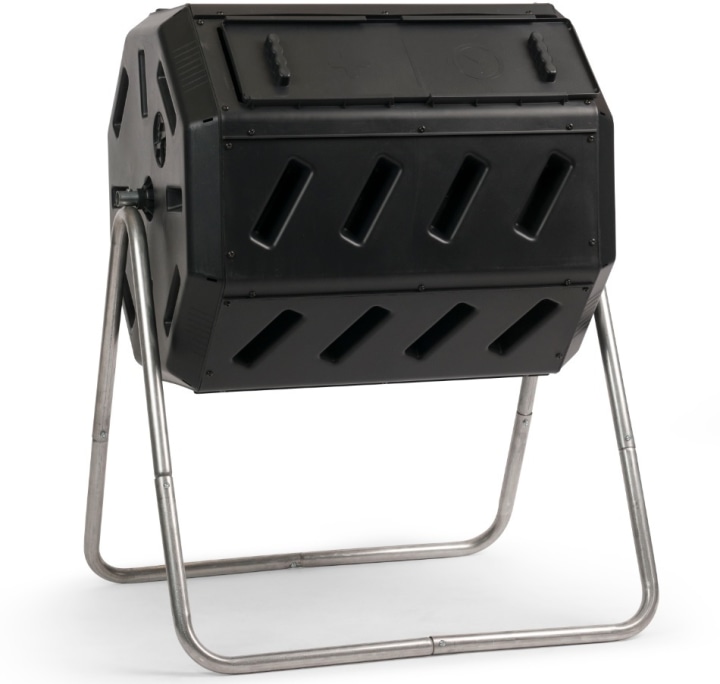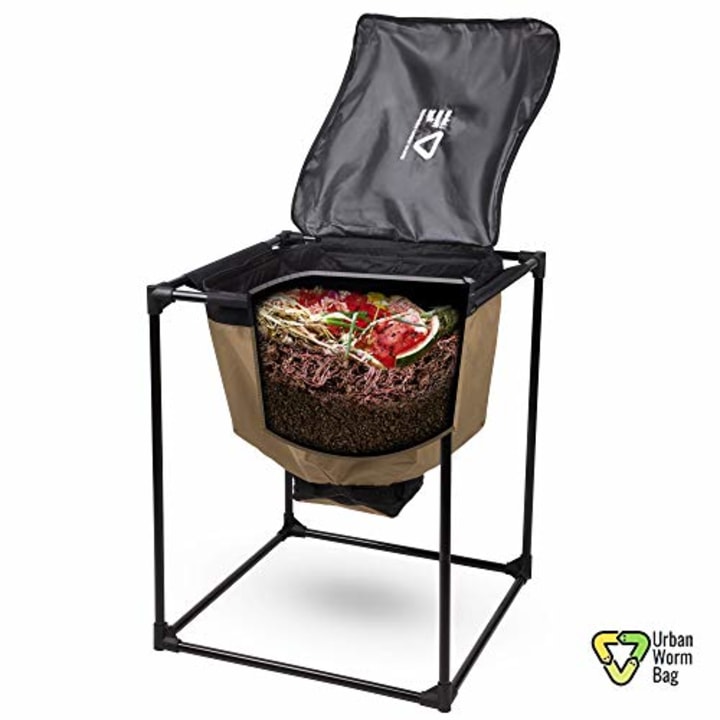Whether housebound Americans are preparing more of their own meals or turning to takeout and delivery, one thing is certain as coronavirus restrictions get extended: People are generating more food waste at home than they did when dining out was an option.
But there’s an eco-friendly fallback you can exercise for all the peels, grounds, expired lettuce and uneaten leftovers: composting at home. Thanks to a growing line of at-home compost bins and kits, you can turn a lot of your organic kitchen waste — and natural yard waste — into a nutrient-rich soil additive that helps plants grow. You’ll also be helping reduce your impact on the climate. We consulted experts about shopping for the best compost bins and other tips.
Full coverage of the coronavirus outbreak
In this article
Composting in a bin can help the environment
America has a food waste problem. Every year we throw out the equivalent of 30 million acres worth of crop production, or almost a pound of food per person per day, the U.S. Department of Agriculture reports. Most of what’s discarded winds up in landfills, where it breaks down and releases methane, a potent greenhouse gas that experts say contributes to global warming.
And some cities that run food-scrap collections to divert organic waste from landfills have suspended them. “Due to the need to limit person-to-person contact and redirect personnel to essential services during the COVID-19 outbreak, all food scrap drop-off sites in the city … are closed until further notice,” agriculture charity organization GrowNYC shared on its blog in late March. So it’s not a bad time to take up composting, especially if new projects are part of your stay-at-home routine.
How to make compost: what goes in and what doesn’t
Compost is decayed organic matter including — but not limited to — food waste that is then used for fertilizer. The number and variety of yard, garden, kitchen, bath and other household items that can be composted might surprise you: The list ranges from moldy bread and pizza boxes to grass clippings and cotton balls, and it runs into the dozens, says Rhonda Sherman, who teaches about composting through North Carolina State University’s extension program and who wrote “The Worm Farmer’s Handbook” for businesses and other institutions that want to compost using “vermicomposting,” or worms. Most — but not all — kitchen waste can go into compost. “If you’re cleaning out your fridge, and you’ve got fruits and vegetables that have gone bad, those are great for composting,” says Jennifer Trent of the Iowa Waste Reduction Center at the University of Northern Iowa.
What should you avoid composting? As before, there’s a list. The experts we consulted advised against using meat and bone scraps or uneaten dairy products (eggshells are fine in compost). Dead leaves? Yes. Pine needles? No: Their waxy coating is harder to break down. Compost “is a resource,” says Jean Bonhotal, director of the Cornell Waste Management Institute and co-author of “Composting at Home.”
The food, leaves, and all those things are nutritional resources that the soil needs, and we can provide,” Bonhotal told NBC News.
How to use a compost bin
The first, easiest step towards composting at home is collecting your daily food waste in a bin or other container that keeps it separated from trash and recyclables as it accumulates.
“I advocate keeping it in the freezer,” says Sherman, who uses a pair of plastic shoe boxes. From there, the scraps go into your composting kit — typically a perforated or ventilated bin with a lid (for traditional composting) or a stacked set of trays (for composting with worms). Most are best when placed outdoors. You can make some work on porches and patios and, in some cases, indoors.
Inside the composter is where the actions begin, as materials mix together and decompose over a period of weeks and months. “Millions of micro- and macro-organisms are the work force,” Bonhotal and “Composting at Home” co-author Mary Scwartz wrote. For best results, your compost mass should to be a mix of waste that is:
- Nitrogen-rich, or “greens:” food scraps, coffee grounds, grass clippings
- And carbon-rich, or “browns:” leaf mulch, straw, twigs
- And it may require some added moisture, experts say.
“All too often, I will walk into a situation where all I see is food piled up outside in a bin, and that really isn’t composting,” says Bonhotal. Trent recommends a 3:1 ratio of browns to greens, a.k.a. carbon-rich to nitrogen-rich materials. The NYC Master Compost Manual advises a 2:1 ratio.
Sherman says the food scraps should effectively be wrapped in the nitrogens because a compost heap that is all food and no foliage will create other problems — especially if it’s a bin-less, open-air pile. “It’s dense, smelly and wet, so if you only put that in your compost bin, it’s going to stink to high heaven,” she says, “and all the animals in the neighborhood are going to be heading for it.”
Let our news meet your inbox. The news and stories that matters, delivered weekday mornings.
Worms for compost bins — or no worms?
If space is limited and traditional composting looks unwieldy, think about using worms. A worm composting bin is also known as a vermicomposter. With vermicomposting, earthworms that eat up to their own weight each day speed the conversion of organic waste into natural fertilizer euphemistically called worm castings. These pooping worms can accelerate the composting time frame from months to weeks, says Mary Murphy, PhD, a South Africa-based environmental educator with Great Britain’s University of Cambridge, and author of “Beginner’s Guide to Earthworm Farming.” “You let the little earthworms do what they’ve been doing for millennia without us; you’re simply giving them the space to do it in a productive and compact way,” says Murphy.
Worm composting kits are smaller and more adaptable to small or enclosed spaces because they don’t generate heat and gases. Traditional composting, in contrast, “releases moisture and carbon dioxide, and it’s just not suitable to have it in your home,” says Sherman. Worms also tolerate temperatures as high 100 degrees Celsius (212 Fahrenheit), although Murphy says to keep their composting environments cooler. Given its benefits and versatility, worm composting also involves more moving parts than traditional composting — including the worms themselves, which you can buy online.
- Experts say worm composting requires more attention to variables such as bedding (coffee grounds) and a moistened top cover (wetted newspaper strips).
- And you don’t want to overfeed or starve your worms.
“With vermicomposting, you’re practicing earthworm husbandry,” says N.C. State’s Sherman. “You have to keep the worms alive. You have to understand the worms.” Worm care may seem a little daunting. But done properly, vermicomposting is “completely odorless,” virtually undetectable to would-be interlopers such as fruit flies and it generates less greenhouse gas than wormless composting, says Murphy. You’ll know when your efforts have yielded a good, soil-ready batch of compost:
- The food particles will be gone.
- It won’t stick to your hands.
- And, Murphy says, “It’ll smell like forest earth.”
Best compost bins
If you’re convinced and want to try your hand at composting, or have been doing so and looking to upgrade your setup, here are some of the best compost bins to shop for right now.
1. Norpro Ceramic Compost Keeper
For smaller households producing food waste in lesser amounts, Norpro makes this compact, single-gallon receptacle in multiple colors if repurposed shoe bins or coffee cans aren’t for you. It’s made with lid holes for breathability and a countertop-friendly design for orderly storage of organic waste before it heads to your compost pile.
2. OXO Good Grips Easy-Clean Compost Bin
With 1.75 gallons of capacity, the OXO bin is also designed to be fitted with biodegradable bags that hold organic waste so it can either go out for curbside collection or migrate to a composting heap.
3. Natural Home Stainless Steel Compost Bin (limited availability)
Natural Home’s bin is itself made from recycled stainless steel, has a ventilated lid and holds up to 1.3 gallons of compostable food waste.
4. Enviro World FreeGarden EARTH Compost Bin
If keeping an open-air compost pile isn’t feasible, this hefty outdoor composting drum will hold and break down up to 82 gallons of the organic waste you collect around the home. The single-unit container body is made of recycled, all-weather materials. The animal- and pet-resistant lid is twistable for airflow adjustment, and a wide opening allows you to easily add or remove material and manage the mix of composting ingredients.
5. FCMP Outdoor Tumbling Composter
Nicknamed the “Yimby” (as in, “yes in my backyard”), this rotating composter on a metal stand promises hand-free mixing of your compost ingredients with regular turns of the container. The Yimby features a pair of adjoining, aerated drums with a combined capacity of 37 gallons, one each for organic waste at different stages of decomposition to produce a steady flow of compost to your garden soil.
6. Nature’s Footprint Worm Factory
The stackable Worm Factory is a set of four connected trays in which worms level up, a tier at a time, as they finish their eating in one environment and then climb to the next. The Worm Factory also collects moisture — the “compost tea” generated by the work of these industrious little annelids — that can be tapped from a spigot at the bottom and used on garden soil.
7. Urban Worm Bag
Urban Worm dispenses with the worm-condo model of composting for a roomy, zippered fabric container that is suspended from a metal and plastic frame. Recommended for indoor use, the Urban Worm Bag also boasts more room than standard worm farms. Breathable fabric with zippers allow for moisture control. Drawstrings enable simple collection of finished compost from the bottom of the bag.

